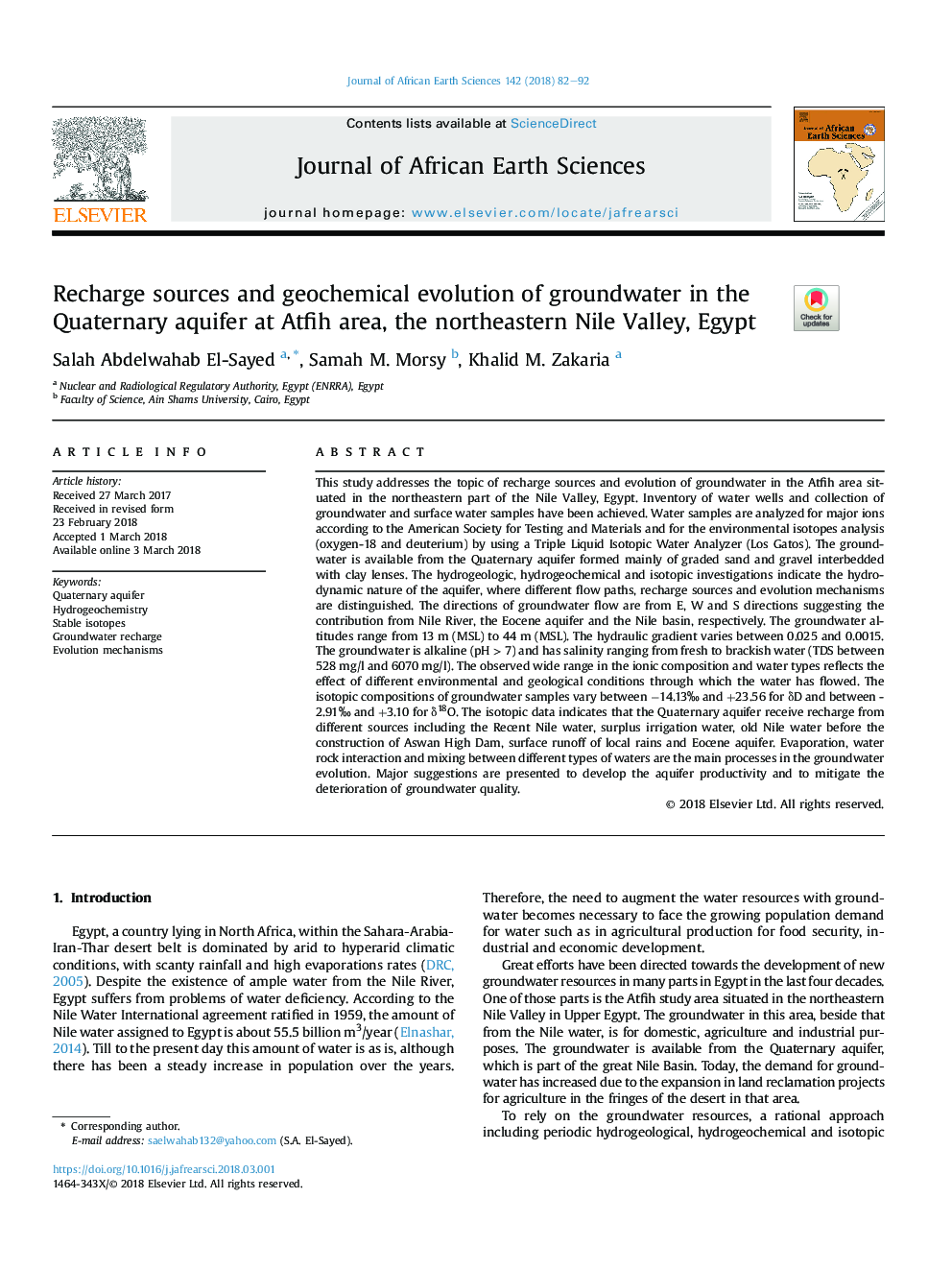| Article ID | Journal | Published Year | Pages | File Type |
|---|---|---|---|---|
| 8913494 | Journal of African Earth Sciences | 2018 | 11 Pages |
Abstract
This study addresses the topic of recharge sources and evolution of groundwater in the Atfih area situated in the northeastern part of the Nile Valley, Egypt. Inventory of water wells and collection of groundwater and surface water samples have been achieved. Water samples are analyzed for major ions according to the American Society for Testing and Materials and for the environmental isotopes analysis (oxygen-18 and deuterium) by using a Triple Liquid Isotopic Water Analyzer (Los Gatos). The groundwater is available from the Quaternary aquifer formed mainly of graded sand and gravel interbedded with clay lenses. The hydrogeologic, hydrogeochemical and isotopic investigations indicate the hydrodynamic nature of the aquifer, where different flow paths, recharge sources and evolution mechanisms are distinguished. The directions of groundwater flow are from E, W and S directions suggesting the contribution from Nile River, the Eocene aquifer and the Nile basin, respectively. The groundwater altitudes range from 13 m (MSL) to 44 m (MSL). The hydraulic gradient varies between 0.025 and 0.0015. The groundwater is alkaline (pH > 7) and has salinity ranging from fresh to brackish water (TDS between 528 mg/l and 6070 mg/l). The observed wide range in the ionic composition and water types reflects the effect of different environmental and geological conditions through which the water has flowed. The isotopic compositions of groundwater samples vary between â14.13â° and +23.56 for δD and between - 2.91â° and +3.10 for δ18O. The isotopic data indicates that the Quaternary aquifer receive recharge from different sources including the Recent Nile water, surplus irrigation water, old Nile water before the construction of Aswan High Dam, surface runoff of local rains and Eocene aquifer. Evaporation, water rock interaction and mixing between different types of waters are the main processes in the groundwater evolution. Major suggestions are presented to develop the aquifer productivity and to mitigate the deterioration of groundwater quality.
Related Topics
Physical Sciences and Engineering
Earth and Planetary Sciences
Geology
Authors
Salah Abdelwahab El-Sayed, Samah M. Morsy, Khalid M. Zakaria,
